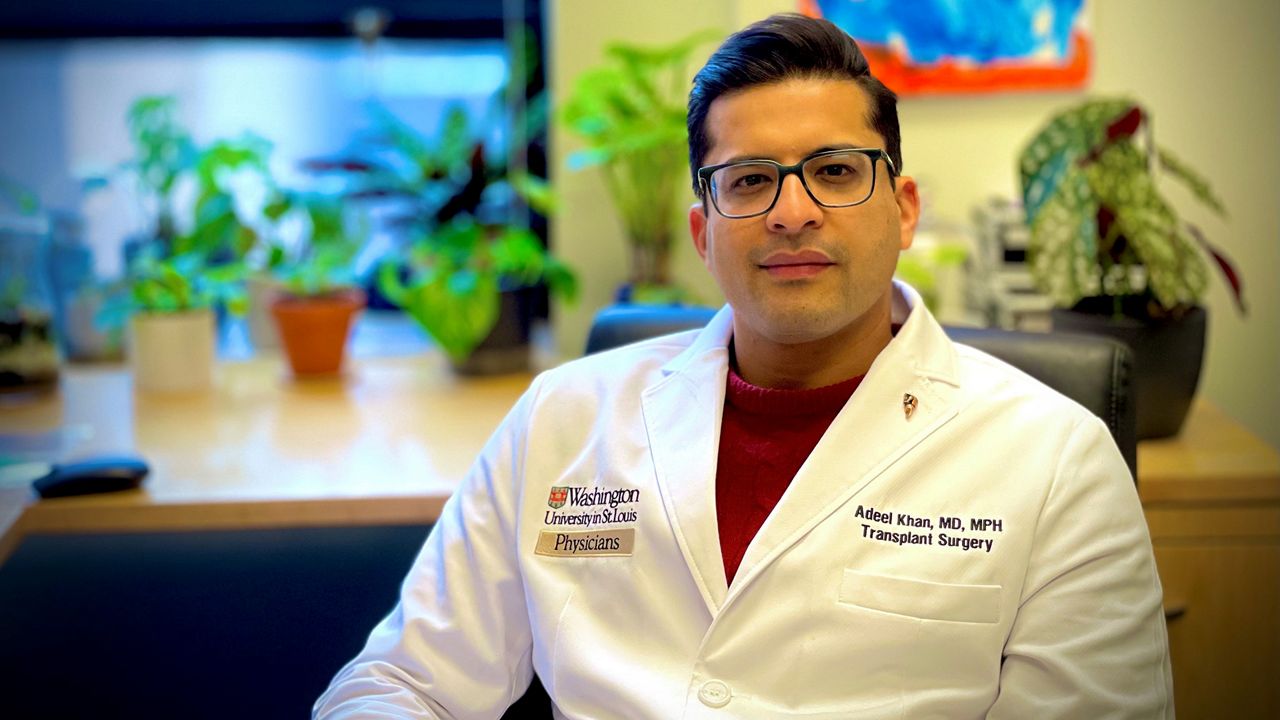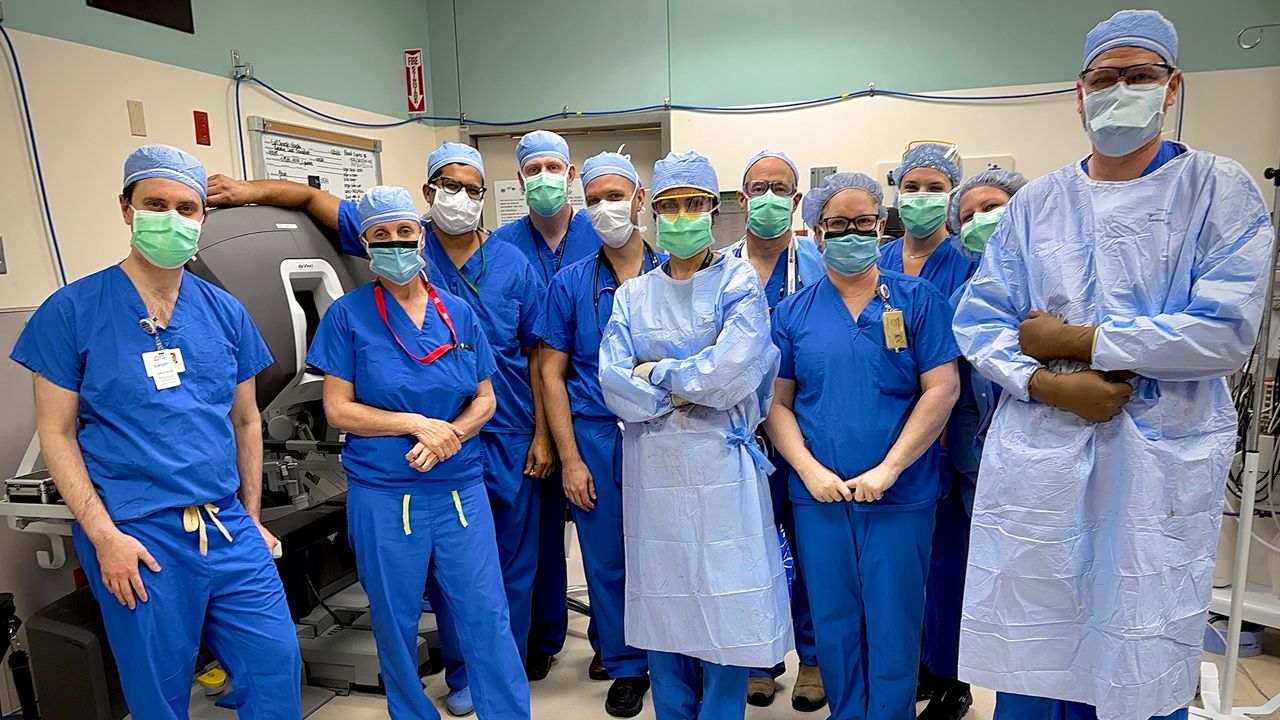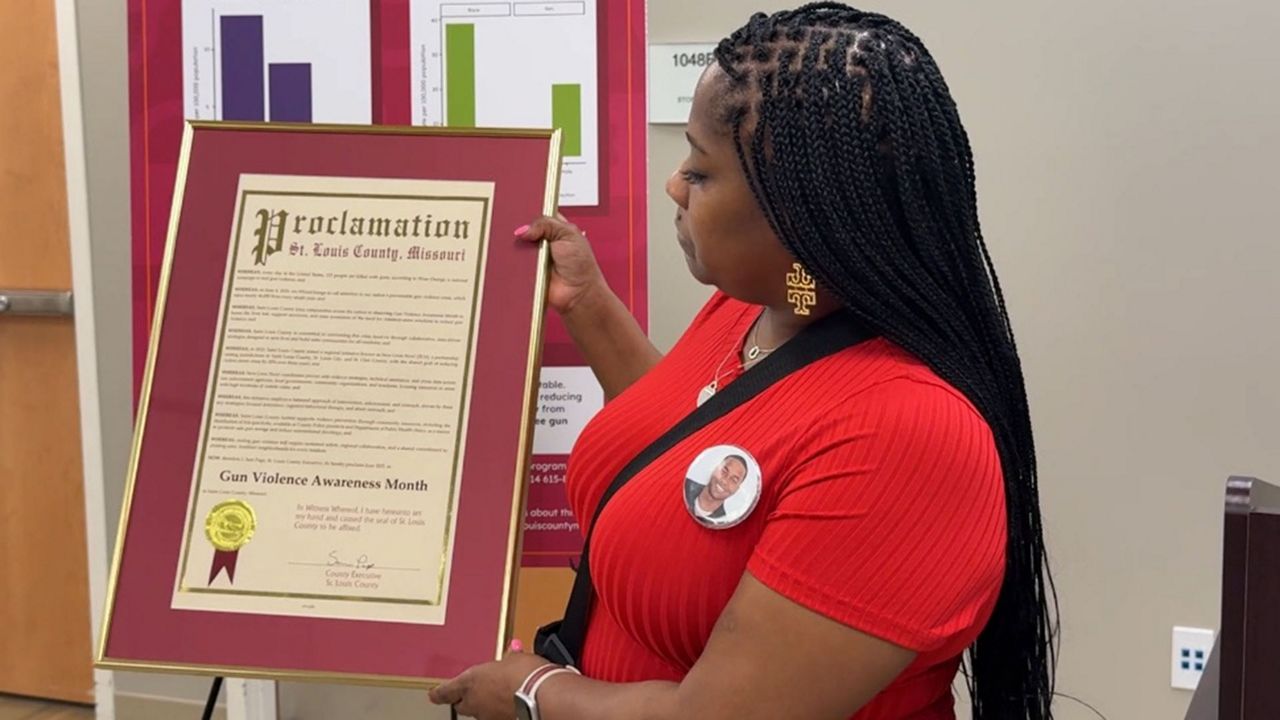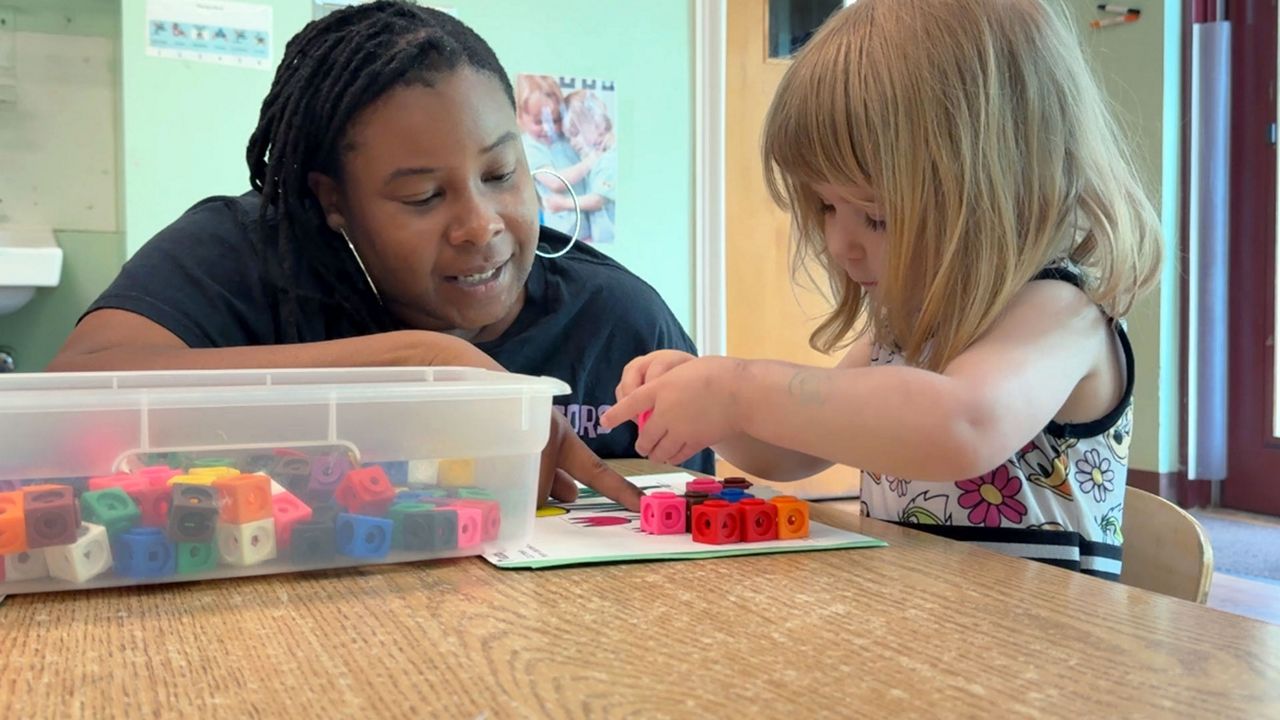ST. LOUIS — A patient in his 60s was up and walking just days after his liver transplant surgery thanks to Washington University doctors and the surgical team who performed the first robotic liver transplant in the country.
The successful surgery was performed in May at Barnes-Jewish Hospital with transplant surgeon Dr. Adeel Khan leading the team, Dr. Majella Doyle, director of liver transplant at Barns-Jewish and St. Louis Children’s hospitals, and other surgeons and surgical staff.
“We’ve developed, with Dr. Khan’s leadership, an incredibly diverse robotic program when it comes to transplant from kidney transplants and kidney donors, as well as liver and pancreas surgery,” Doyle said. “And now moving onto liver transplants, it’s a giant step and so novel that I really think it’s giving great sort of strength to WashU and to our transplant center.”
“I think we’re already a well-known transplant center, but I think this really puts us, I would like to say, ahead of the curve, but definitely being aggressive and using novel strategies,” she added.
Using a robot minimizes the amount of cutting, which makes the patient’s scar small, resulting in less pain and a quicker recovery, according to Khan.

A traditional transplant operation involves a large incision, cutting under the ribs on both sides of the abdomen and extending up, resembling a Mercedes Benz logo, Khan said.
“That involves cutting pretty much all of the abdominal muscles,” he said. “And then you also cut the oblique muscles on the side and as you can imagine at the end, when you put those together, it does take a little bit of time to recover from that.”
Patients prior to surgery already are not very active, according to Khan, and a large incision from surgery can slow down recovery. Typical recovery time for liver transplant recipients is at least six weeks before walking without discomfort.
With the minimally invasive robotic approach, Khan said most of the operation was performed through half-inch keyhole incisions and one six-inch vertical incision between the abdominal muscles to remove the deceased liver and replace it with the live one.
“We really didn’t cut through any muscles. There was really not too much stretching or need to put retractors under the ribs, which can cause a lot of pain,” Khan said. “While you still have an incision to remove and put the new liver in, it’s better tolerated, and the recovery is a lot less.”
Not only can the robotic approach give patients the chance to return to normal life faster, but it could potentially allow for the procedure to be performed on frail patients, according to Khan.
A month after robotic liver transplant surgery, the patient’s only questions were when he could start playing golf and begin swimming again, according to Khan.
“Those questions are questions we are not used to hearing because a month after, most patients are barely learning to walk again without being in discomfort,” he said. “And just to have somebody talk about going back to sports and physical activity, it’s just great for us to hear.”
Khan said the patient is doing well and there were no surgical complications.
Washington University has several surgical robots and for the past six years, the transplant service had been slowly building its robotics program for cases such as kidney transplants, kidney donors, liver, and pancreas surgeries, according to Khan.
“Over the years, we’ve not just gained a lot of experience in those technical operations through the robot, but we also built a really good team, which allows us to do these extremely complex cases safely, and in a way that we can then teach to others,” he said.
Khan noted that the “liver transplant itself is probably one of the most complex operations in general,” and to perform the robotic surgery successfully took months of planning, practicing, preparation and building the team of experts.
“All of that practice and hard work really paid off because I don’t think we could have expected it to go smoother,” Doyle said.
“And, of course there were hiccups along the way because it was the first time we had done the procedure like that in a patient, but we were able to, as a team, really transcend any obstacles and complete the surgery. It was really remarkable.”
Moving forward, the focus is ensuring the operation and the technique can be reproduced and taught safely to others, in addition furthering research, according to Khan.
“It’s so important for us to be the trainers, but having the procedure streamlined so that it’s reproducible and teachable to others is the key for us,” Doyle said.
Khan said transplantation is a life-saving operation for livers, kidneys, hearts, lungs, and other organs, and he mentioned there is a nationwide shortage of donors.
“Unfortunately, some of the patients die before they can get a transplant. So, organs become available when people donate organs,” Khan said. “Organ donors save lives, and we can all choose to be organ donors.”
“Any message on any robotic innovation surgery or transplant would be incomplete without thanking the donors for their kind gift and also reminding everybody that none of this would be possible without their selfless gifts and donations.”








